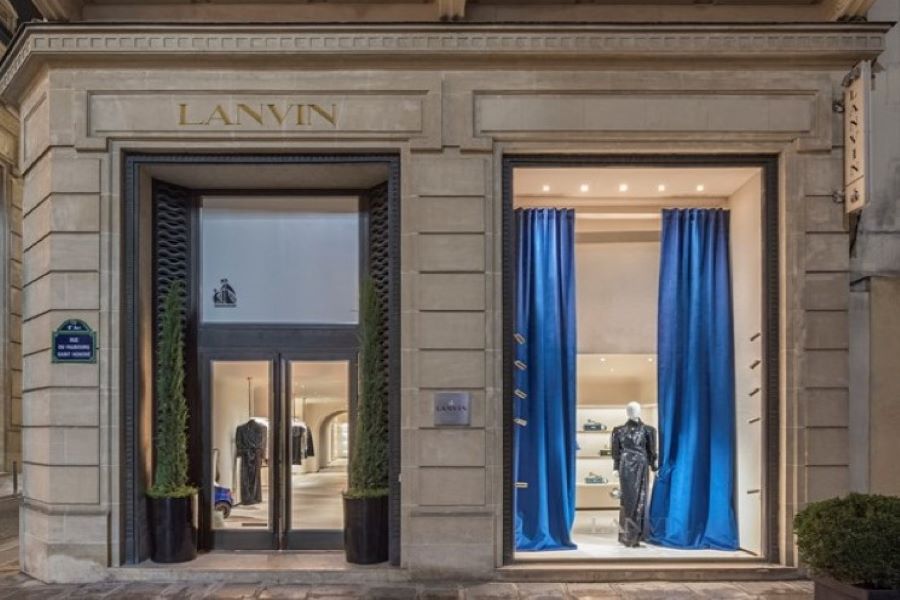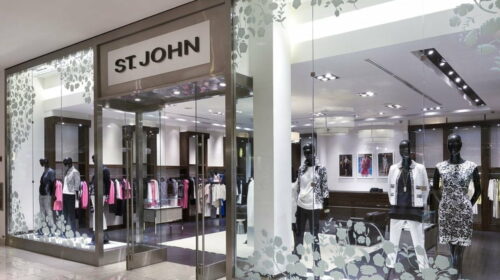China Offers Up Luxury Investment With Lanvin Backdoor Listing Plan

Local private equity giant Fosun says it will use a SPAC to list Lanvin, whose brands also include St. John Knits, Sergio Rossi and Wolford
Key Takeaways:
- Chinese private equity giant Fosun will list its Lanvin luxury goods unit in the U.S. using a SPAC backed by Primavera Capital, another major Chinese private equity company
- Lanvin is currently losing money, but Fosun believes the company can become profitable by 2024 if it meets its aggressive growth projections
By Doug Young
Watch out, world. China is entering the global race for investor dollars chasing global luxury brands, with word that the country’s Fosun International (0656.HK) is preparing a backdoor U.S. listing for its recently established Lanvin Group.
This particular listing has quite a few big-names attached to it, and is being made using a special purpose acquisition company (SPAC), a type of publicly traded empty shell containing nothing but cash that has become all the rage on Wall Street these days.
While Fosun and its many big-name partners made a splash with announcement of their plan, investors seemed more indifferent to the news. Perhaps that’s because all the big words were accompanied by Lanvin’s own relatively modest valuation for itself and its admission that it won’t become profitable until around 2024, at the earliest.
We’ll shortly get into the financials, which include some very aggressive growth forecasts for this company that was only recently cobbled together by Fosun through a series of acquisitions. But first let’s look at the big names behind this backdoor listing, as they really are relatively impressive.
First there’s Fosun International’s parent, Fosun Group, which is arguably China’s top private equity investor. Then there’s Primavera Capital, another big-name Chinese private equity company founded by the former head of Goldman Sachs’ Greater China operation, whose Primavera Capital Acquisition Corp. (PV.US) SPAC will take Lanvin public through a reverse acquisition.
The list of brands in Lanvin’s stable is also relatively well-known, including Lanvin itself, along with Italian luxury shoemaker Sergio Rossi; American womenswear brand St. John Knits; Austrian skinwear specialist Wolford; and Italian menswear maker Caruso. Then there are a few well-known investors who will buy into the proposed listing, led by Japanese trading house Itochu (8001.T) and luxury footwear maker Stella International (1836.HK).
Fosun’s game plan for Lanvin is similar to one it used for its Fosun Tourism (1992.HK) unit, which is anchored by the French Club Med chain of resorts that it purchased in 2015. Put simply, it wants to leverage its strong China connections to bring these big global brands to a generation of newly affluent Chinese looking for more vacation options and luxury goods.
A prospectus-like document announcing the deal cites the latest Bain-Altagamma Luxury Goods Worldwide Market Study saying that China is expected to account for a staggering half of all luxury goods sales worldwide by 2025, with global spending on the category set to reach $430 billion by then. By comparison, Greater China currently accounts for just 14% of Lanvin Group’s total sales. Europe accounts for nearly half, while about a third comes from North America – much of that from the U.S.-based St. John Knits brand.
So, clearly there’s plenty of room for growth in both China and also North America, which Lanvin says will be two major focus areas for expansion of its traditional brick-and-mortar stores combined with a fast-growing e-commerce operation. The company currently has about 300 such stores worldwide and plans to boost that sharply by opening another 200 by 2025.
Bullish growth forecast
With all that qualitative background in mind, we’ll spend the rest of this space looking more closely at the many numbers behind this company, starting with its listing terms.
Under the deal, Lanvin will move all of its assets into Primavera Capital Acquisition Corp., and get 65% of the SPAC in return. Shares of the SPAC didn’t move too much after the announcement, indicating investors think the SPAC is probably fairly valued now with a market value of $530 million. Lanvin shareholders will also get $544 million in cash, making the deal worth about $900 million.
By comparison, Fosun estimates Lanvin now has an enterprise value of up to $1.5 billion, and an equity value of up to $1.9 billion. So based on the gap between the deal value and Fosun’s own valuation estimates, there’s clearly there’s some upside potential for the stock – if you believe Fosun’s estimates.
Fosun said its valuation gives Lanvin an estimated price-to-sales (P/S) ratio of 2.7, based on its forecast for 473 million euros ($520 million) in sales this year. That looks quite modest compared to P/S ratios of 4.9 for global leader LVMH (MC.PA), 4.1 for Gucci parent Kering (KER.PA) and a lofty 14.5 for Hermes (RMS.PA).
A big reason for the big discount is probably Lanvin’s newness as a company, and its money-losing status. Fosun only acquired the Lanvin brand in 2018, and it purchased most of the others even more recently. The group is currently losing money, and isn’t expected to become profitable until 2024 if it can meet Fosun’s aggressive growth projections.
In that regard, Fosun said it believes Lanvin can become profitable when it crosses the 600 million euro threshold for annual revenue. By comparison, it generated pro forma revenue of 333 million euros last year, up a modest 23% from 2020. It forecast its revenue will grow 42% this year to 473 million euros, and sees the figure reaching 989 million euros in 2025 – triple the 2021 level.
Rapidly expanding in China will be an important element to achieving that growth, and the company also said it expects at least one major future acquisition to contribute to the total.
We can look at Fosun Tourism to see how well Fosun has done in bringing global brands to the China market in the past. The record doesn’t look that impressive, frankly speaking, though at least some of that may be tied to the global pandemic that has put a huge damper on travel in general.
China accounted for just 6.6% of revenue from Fosun Tourism’s core Club Med operations last year, roughly the same as the 6.4% of business in 2020 and a marginal improvement from the 5.9% in 2019, according to Fosun Tourism’s annual results released earlier this week. Fosun Tourism has also built a massive resort on southern Hainan island that would roughly triple revenue from its mainland China operations to about 20% of its total.
While that’s progress, the figure is still relatively small compared to the kind of potential Fosun was hoping for from the China market. Of course, luxury goods is a different animal from tourism. But if anything, the Fosun Tourism example shows that converting big visions for the China market into reality can often be a long and difficult process.
To subscribe to Bamboo Works free weekly newsletter, click here





